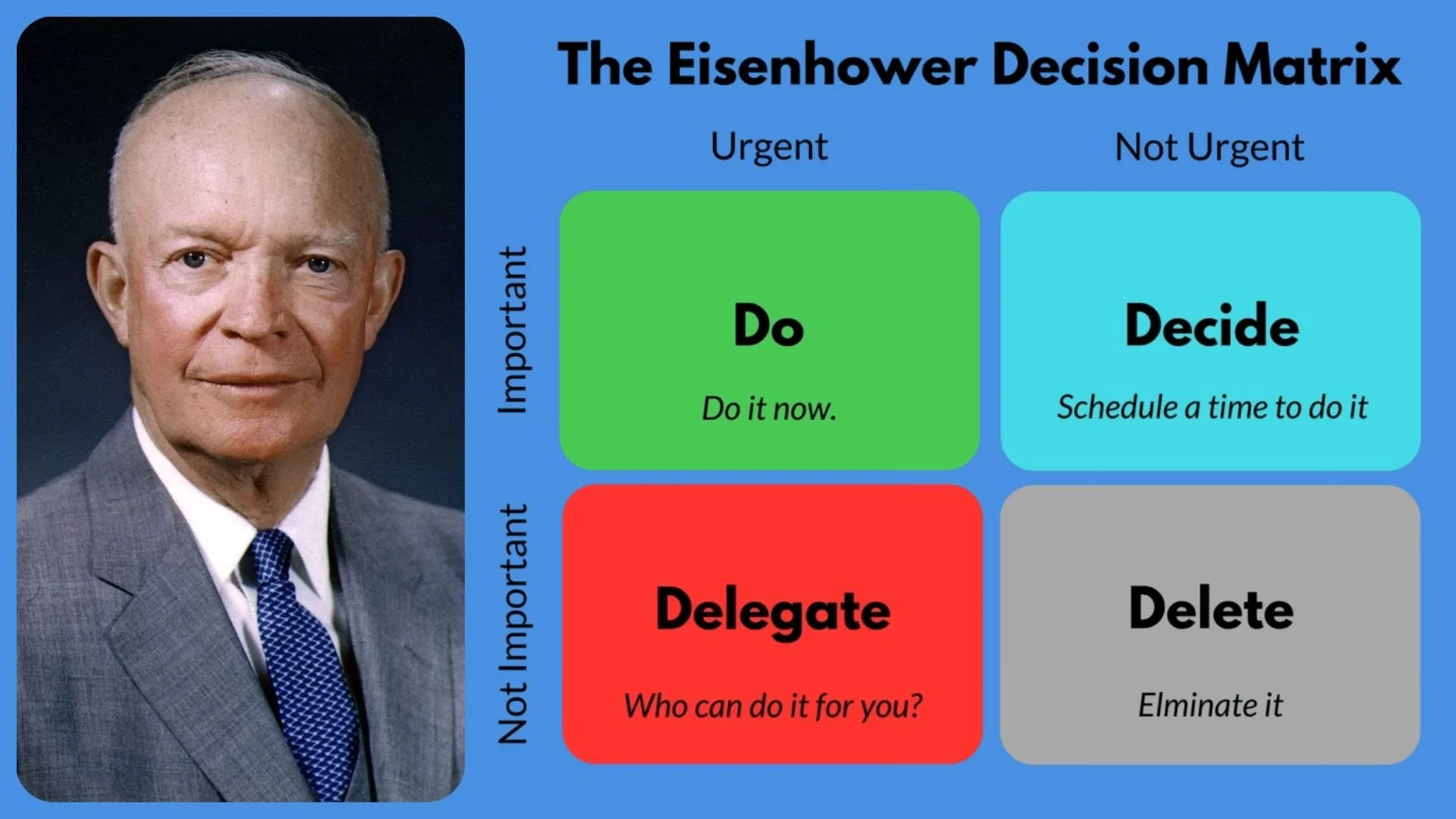Understanding the Eisenhower Matrix
the Eisenhower Matrix
“I have two kinds of problems—the urgent and the important. The urgent are not important, and the important are never urgent." - Dwight D. Eisenhower
Dwight D. Eisenhower oversaw the creation of NASA, the signing of the Civil Rights Act, and the introduction of the Interstate Highway System. He also immortalized himself in the project management field by planting the seeds of the aptly-dubbed Eisenhower Matrix. “I have two kinds of problems—the urgent and the important,” the 34th President purportedly declared. “The urgent are not important, and the important are never urgent."
So how can this observation be meaningfully expanded to Project Management? And what exactly is the Eisenhower Matrix.
Picture a square divided into four even quadrants:
Quadrant I - Urgent and Important (Do): Tasks that fall into this category require immediate attention and directly contribute to the long-term goals of the project. These are often crises, deadlines, or pressing issues that need to be addressed right away. In short—it’s the kind of stuff you don’t want to ignore!
Quadrant II - Not Urgent but Important (Schedule): Tasks in this quadrant are important for achieving the project’s goals, but that doesn’t mean you should drop everything you’re doing to attend to them. These should be scheduled and planned for to ensure they get done. Examples include strategic planning, skill development, or relationship building.
Quadrant III - Urgent but Not Important (Delegate): Sure, these tasks might require immediate attention, but there’s a good chance they’re doing nothing for your long-term goals. If possible, delegate these tasks to others, or at least minimize the amount of time you’re spending on them.
Quadrant IV - Not Urgent and Not Important (Eliminate): Tasks in this quadrant are often distractions or time-wasters. They do nothing for the project’s goals, and they don’t have a meaningful timeline attached to them. Sweep these into the waste bin wherever possible and go on with your day.
As for whether Eisenhower ever used his famous matrix is a question for another day. For now, it remains a useful tool for ensuring that important tasks are prioritized while managing time effectively.
